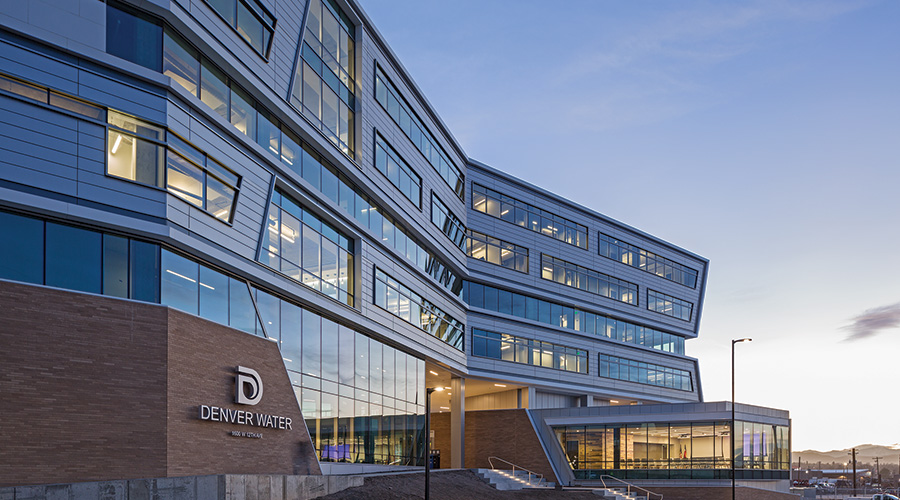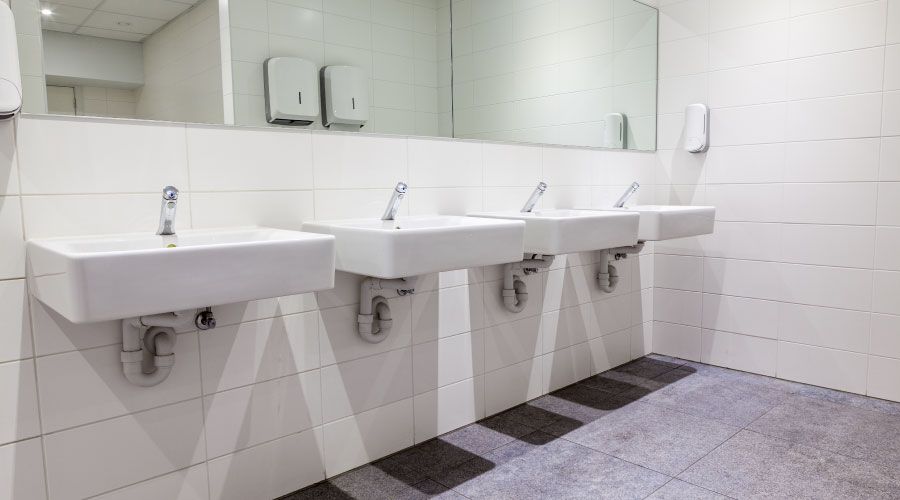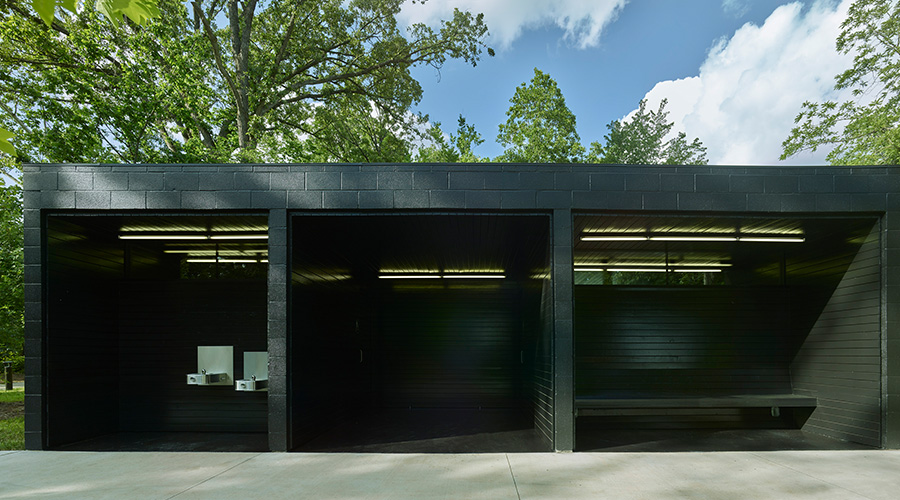 Restroom fixtures that are supported overhead or from the walls reduce the number of obstacles around which custodians must maneuver when cleaning the floor. Gresham, Smith and Partners/Mike Rixon
Restroom fixtures that are supported overhead or from the walls reduce the number of obstacles around which custodians must maneuver when cleaning the floor. Gresham, Smith and Partners/Mike RixonDurable Materials, Design Keys to Keeping High-Traffic Restrooms Clean
Design features — such as durable stall partitions and soap dispensers, sinks, waste units, and dryers located close to each other — help maintain high-traffic restrooms.
One of the biggest challenges in both school and airports is heavy traffic, which can come with unpredictable peaks. Because cleaning the rooms is difficult when they’re in use, many restrooms incorporate design features that can help them remain clean and looking new, Sweet says.
To start, durable stall partitions and joints are critical. In airports, for instance, people tend to move quickly, usually while carting bulky luggage. “Often, they don’t have a lot of concern for the state they leave a facility in,” Sweet says. The materials chosen must hold up.
Low-cost metal or composite skin partitions are too easily dented, scratched or vandalized, says Rob Wroble, associate director, K-12 education, with Chicago-based Legat Architects. In the long run, their lack of durability can cost more than the initial savings.
Corian, long popular for sinks and countertops, is now seen in stall partitions, due to its durability and maintainability, Wroble says. Phenolic core partitions also are common. They’re made of laminate sheets heat-fused to a core, forming a strong, water-resistant material.
Another option is solid core resin composite (SCRC) material. The color is steeped through the panel, so it’s both durable and highly cleanable. High-density polyethylene (HDPE) also is commonly used with stall partitions, Sweet says. It’s made when polymer resins are put under high pressure to form large panels that can resist damage from graffiti or from heavy bags banging into it.
If stainless steel or metal partitions are used, they’ll typically incorporate a pattern that helps to disguise stains and dirt.
Along with resisting abuse, partitions and joints need to stand up to cleaning chemicals. Plastic continuous brackets are one option, Schipp says. They’re as strong as aluminum ones, hold up to cleaning, and don’t rust.
In airport restrooms, the sinks, soap dispensers, waste units, and dryers tend to be located near each other. This keeps people moving and, by limiting the distance individuals must walk with wet hands, minimizes drips that lead to slipping hazards, Smith says.
To keep maintenance and cleaning as easy and efficient as possible, Schipp tries to specify fixtures that are supported overhead or from the walls. That reduces the number of obstacles around which custodians must maneuver when cleaning the floor. He’ll also try to minimize the number of ninety-degree corners. “Any time you have a ninety-degree angle, you can’t get the mop in and it becomes harder to clean,” he says.
Airport restrooms also often have fixtures that don’t make contact with the floor. “When the cleaning staff comes in, a quick sweep is all that’s needed,” Sweet says.
No matter the materials, the appropriate cleaning products will determine how long the fixtures remain looking new and clean. To extend this time frame generally requires sticking with products the manufacturer has tested and approved. “Avoid home remedies,” Schipp says. “There are more than ample supplies to clean and kill germs.”
Related Topics:















